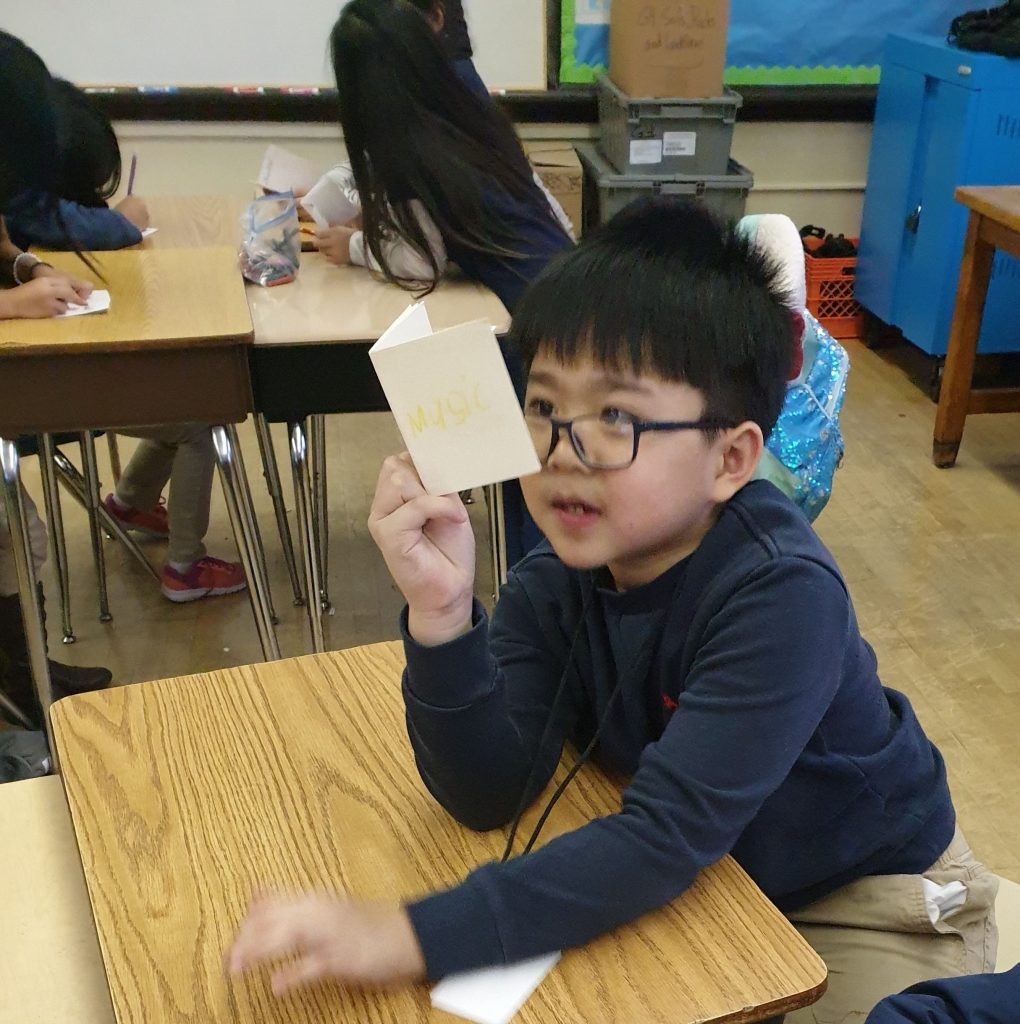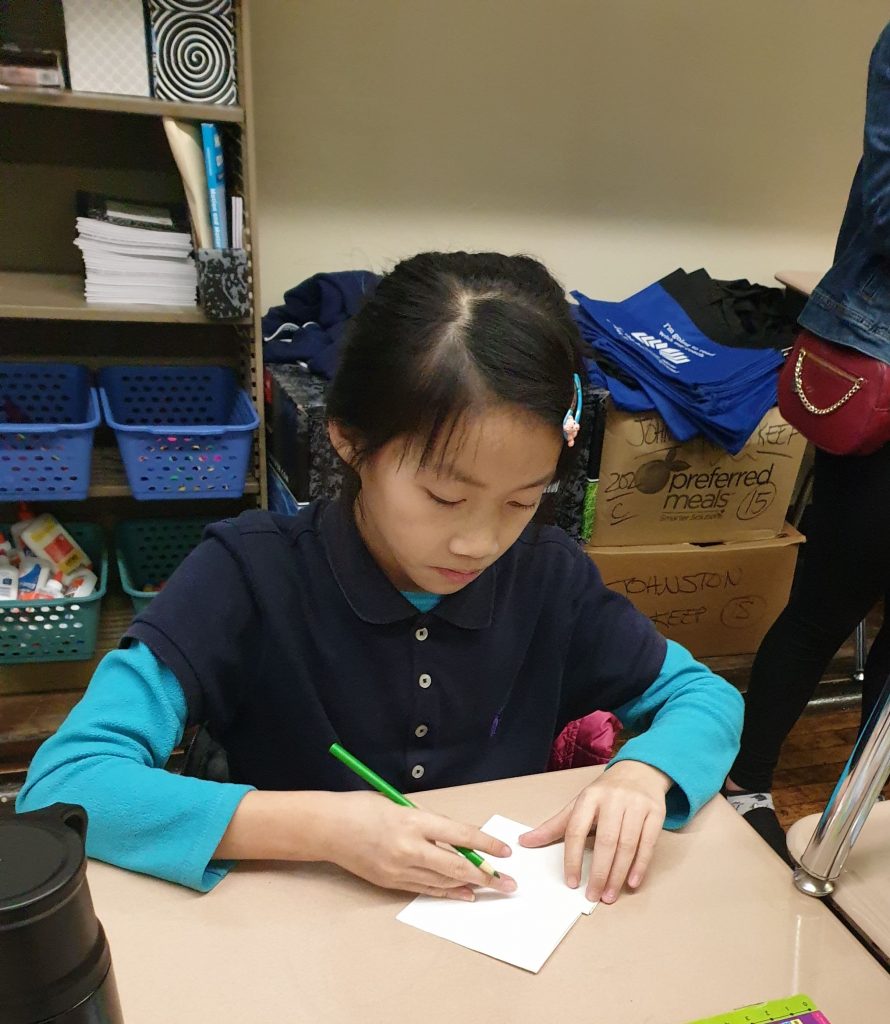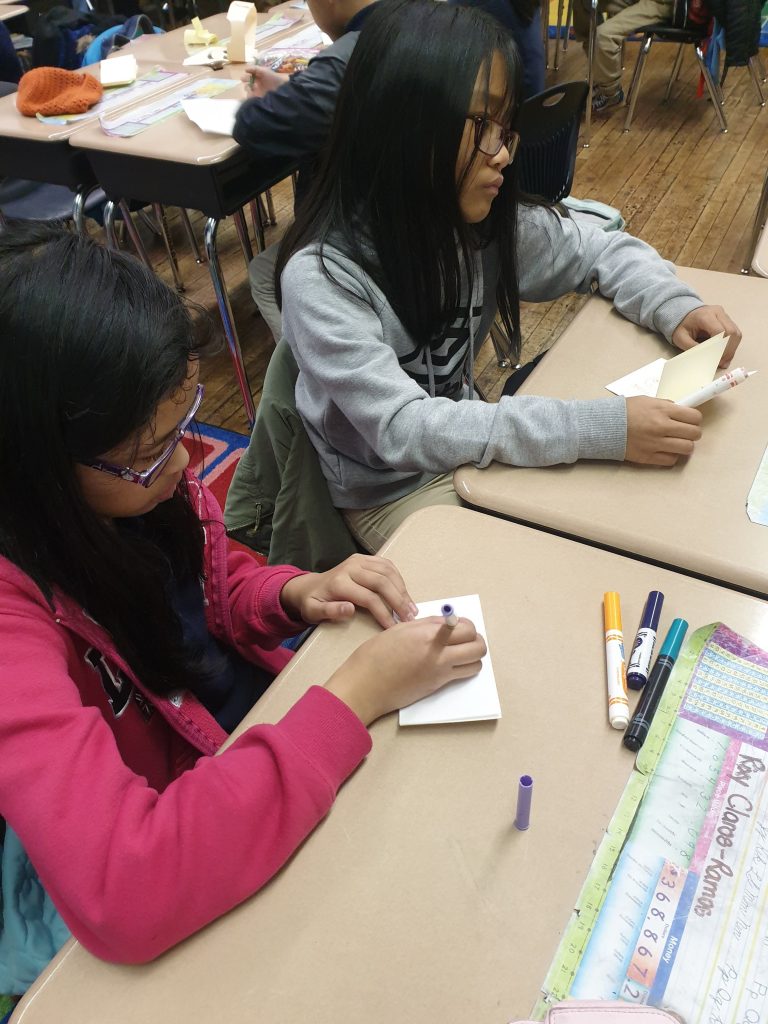
Making music provides unique opportunities for students to express their emotions. Often through music we realize how we are feeling and name those feelings. It also allows us to release emotions by making our own music, listening to it, or singing and dancing.
For our Music, Mindfulness and Motion through Art class today, we brought in small personal drums that each student could play and experiment with making different sounds based on where and how they hit the drum and which part of their hand that they used. They were allowed to improvise and were assigned to make sounds based on their feelings, keeping in mind vocabulary such as Beat ( The unit division of musical time), Tempo (Italian for “time” is the speed at which a passage of music is or should be played) and Rhythm (a strong, regular, repeated pattern of movement or sound).
Rhythm as define by the Encyclopedia Britannica comes from the Greek rhythmos, derived from rhein, “to flow” and is an ordered alternation of contrasting elements. The notion of rhythm also occurs in other arts (e.g., poetry, painting, sculpture, and architecture) as well as in nature (e.g., biological rhythms). Unlike a painting or a piece of sculpture, which are compositions in space, a musical work is a composition dependent upon time. Rhythm is music’s pattern in time. Whatever other elements a given piece of music may have (e.g., patterns in pitch or timbre), rhythm is the one indispensable element of all music. Rhythm can exist without melody, as in the drumbeats of so-called primitive music, but melody cannot exist without rhythm. In music that has both harmony and melody, the rhythmic structure cannot be separated from them. Plato’s observation that rhythm is “an order of movement” provides a convenient analytical starting point.
We taught students that there are five types of rhythm:
- Random Rhythm.
- Regular Rhythm.
- Alternating Rhythm.
- Flowing Rhythm.
- Progressive Rhythm.
Step 1: We introduced vocabulary and demonstrated Beat, Tempo and Rhythm.
Step 2: We demonstrated each the 5 types of rhythm. And asked students to tap different beats on the desk with us.
Step 3: We asked students what the drums were made of and explained the parts. holding the drums to demonstrate how they would play if they were feeling happy.
Step 4: Then, they passed it to the next person and we asked how they would play if they were feeling sad.
Step 5: We did this two more times with them feeling frustrated and excited.
Step 6: Discussion about their experience and give the definition of a percussion instrument. (a musical instrument that is sounded by being struck or scraped by a beater including attached or enclosed beaters or rattles struck, scraped or rubbed by hand or struck against another similar instrument.)
Step 7: We explain that the most common percussion instruments in the orchestra include the timpani, xylophone, cymbals, triangle, snare drum, bass drum, tambourine, maracas, gongs, chimes, celesta, and piano as a lead in to discussion on these instruments.
Reflection: We discovered that many of our students have never had the opportunity to try out a drum before! All the tempos and beats were clearly varied and different depending on the mood. We didn’t have to teach the students how they should play based on a different mood, because this is something they knew and were able to recognize based on how well they understand their feelings. All of our students were able to say that had played a percussion instrument today!


We wanted to teach our classes how to notice the effect music has on them.
Step 8: We made origami books and had students use coloring pencils and crayons to visually express feelings. We played various kinds of music that would generally cause different kinds of feelings and asked that while each piece of music was being played, that they would draw how they felt in that moment. It could be a picture or a memory, or just colors and scribble on the page.
Reflection: It was our goal to have students in a visual way see their feelings and display them through music, image, words or writing. We asked what colors they would normally use if they were feeling sad, happy, etc. They answered with blues and greens for sad or calm and reds and oranges for happy or excited, and we asked them to keep this in mind as they were drawing out their emotions to get their point across better. This was a lead in for sharing expressions , musical terminology and emotional/symbolic color such as “Singing the Blues” and “Feeling Blue” and “Red hot with Anger “.






Our classes did such a great job with this project. They were able to show their various states-of-mind during each song we played, and each students interpretation was different. They were also able to stand up and explain to the class why they felt this way and how they demonstrated this on the paper. This was a very effective way to teach students healthy ways to express themselves through the arts as an alternative to keeping their feelings in or acting out. They now have many ways to release what they are feeling. Even if it’s not through words, but it’s through colors and drawing and images, they can still share their story.

